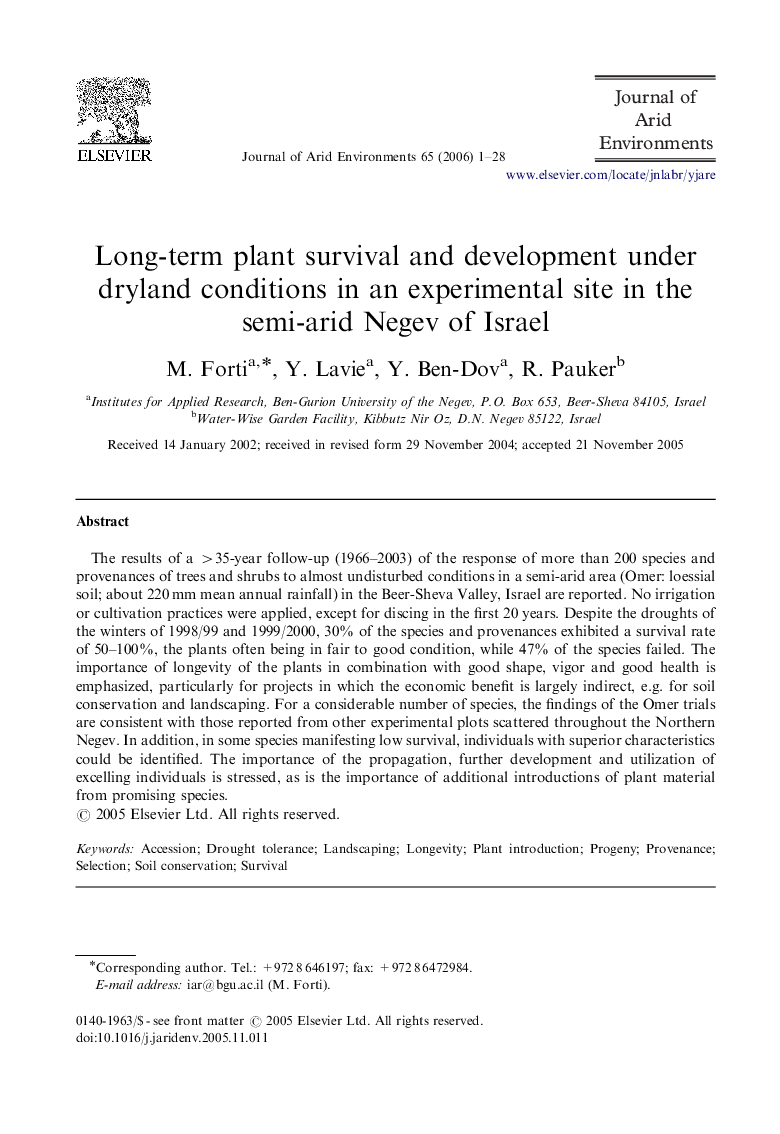| Article ID | Journal | Published Year | Pages | File Type |
|---|---|---|---|---|
| 4394837 | Journal of Arid Environments | 2006 | 28 Pages |
The results of a >35-year follow-up (1966–2003) of the response of more than 200 species and provenances of trees and shrubs to almost undisturbed conditions in a semi-arid area (Omer: loessial soil; about 220 mm mean annual rainfall) in the Beer-Sheva Valley, Israel are reported. No irrigation or cultivation practices were applied, except for discing in the first 20 years. Despite the droughts of the winters of 1998/99 and 1999/2000, 30% of the species and provenances exhibited a survival rate of 50–100%, the plants often being in fair to good condition, while 47% of the species failed. The importance of longevity of the plants in combination with good shape, vigor and good health is emphasized, particularly for projects in which the economic benefit is largely indirect, e.g. for soil conservation and landscaping. For a considerable number of species, the findings of the Omer trials are consistent with those reported from other experimental plots scattered throughout the Northern Negev. In addition, in some species manifesting low survival, individuals with superior characteristics could be identified. The importance of the propagation, further development and utilization of excelling individuals is stressed, as is the importance of additional introductions of plant material from promising species.
